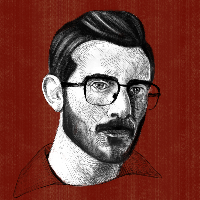Comparison of the frescoes of the holy shrines in Lahijan and the paintings of Karkia Shahnameh
In addition to aesthetic features, works of art also reflect the socio-cultural relations of the producing context. In Gilan, many holy shrines accommodate murals that belong to the Safavid period. On the other side, Karkia Shahnameh was written in the 15th century AD in the city of Lahijan. This Shahnameh is illustrated in the style of Turkmen painting in Shiraz. This paper as the descriptive-analytical study queries the similarities and differences between the designs of Karkia Shahnameh and the murals of the holy shrines. The data collection method is based on library review, and data analysis was conducted qualitatively. The research findings show that there are some distinctive similarities between mural paintings of the studied holy shrines and portrays of the Karkia Shahnameh, so that the semiotic spaces of Shiite culture is a part of it. Both paintings have common symbolic motifs such as dragon, sun, crown and cypress tree. The motif of the sun is used in the same sense in both paintings, but the role of the dragon has a completely opposite meaning. The motif of the crown in both paintings also means kingship, power, and celestial splendor. The cypress tree also has common meanings, all of which are rooted in Iranian cultural beliefs. Although those mentioned signs almost rooted in the Iranian culture, the unique representation of the symbols in each specific artistic work (murals or book illustration) convey distinguishable meanings due to the relations with other signs within the executed context.
-
Reading the Visual Aspects of the Grotesque Body in the Iranian Cinema and Theater Posters (1390s)
, Mohsen Marasy *
Journal of Fine Arts, -
A Concept Analysis of otherness and carnivalism in the Manuscript of “ Seyf ol-Moluk and Badi’ ol-Jamal” from Bakhtin’s theory
Sedigheh Edraki *, , Ziba Kazempoor
Journal of Theoretical principles of Visual Arts, -
The manifestation of Iranian-Islamic symbols in the cat and coup video game
, Khashayar Ghazizadeh *
Journal of Interdisciplinary Research of Art, -
An analysis of the mother goddess motif in Persian and Turkish handwovens with an emphasis on the historical background
Hossein Abeddoost *, Ziba Kazempoor
Journal of interdisciplinary studies of visual arts,



